
'Virtual
Reality' and 'Augmented Reality' buzzwords that can mean a lot
of different things depending on who you talk to, and the line
between them can be blurred.
There have
been various ways of of trying to create scales or continuums
from fully real worlds to fully virtual worlds - https://en.wikipedia.org/wiki/Reality%E2%80%93virtuality_continuum

in general
looking something like this:
- real
environment - you are completely immersed in the natural
world with minimal access to any synthetic worlds (e.g. your
smartphone)
- augmented reality - you out in the real world with
some gadgets (phone, headset) that allow you to experience the
real world and a synthetic world simultaneously where the tech
could range from a watch to a smart phone to a see through head
mounted display.
- virtual reality - you are completely immersed in a
synthetic world with minimal access to the real world
There is a
large grey area of 'mixed reality' that covers most of the space
from purely real to purely virtual where we spend most of our
lives. I may be walking down the street looking at a set of
directions on my smartphone, or I may be sitting on my couch
with some chips and a drink playing a video game on a big TV.
Lets take a
look at the different elements of Virtual Reality, and how
technology, in particular video games, have been moving us
closer and closer to achieving it.
We are all
pretty familiar with the 'pure reality' side of the spectrum so
lets start with Virtual Reality
The key element to virtual reality is immersion ... the sense of being surrounded.
A good novel is immersive without any fancy graphics or audio hardware. You 'see' and 'hear' and 'touch' and 'taste' and 'smell'
A good play
or a film or an opera can be immersive using only sight and
sound.
But they
aren't interactive which is another key
element.
The
children's 'Choose Your Own Adventure' books in the late 70s
added limited interaction to books giving the reader a handful
of choices every few pages that would lead to 40 endings in the
case of the first book 'The Cave of Time', but it was computers
that would run with this concept.
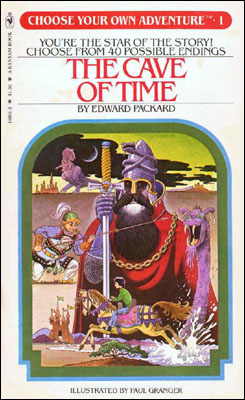

Here is a
sample page (Image from https://pdfcookie.com/documents)
(and if you
wish more 'serious' literary context on the topic, please see https://en.wikipedia.org/wiki/Hypertext_fiction
for several very serious pieces of literature with similar
methods)
Older textual
computer games from the late 70s and early 80s such as
Adventure
(https://en.wikipedia.org/wiki/Colossal_Cave_Adventure), Zork
https://en.wikipedia.org/wiki/Zork, and the Scott Adams (not the
Dilbert guy) adventures are immersive and interactive and place
the user within a computer generated world, though that
world was created only through text. You can play adventure
online at http://www.astrodragon.com/zplet/advent.html. You can
play the personal computer version of Zork online at
http://textadventures.co.uk/games/view/5zyoqrsugeopel3ffhz_vq/zork.
The Scott Adams adventures are playable at
http://www.freearcade.com/Zplet.jav/Scottadams.html
video: https://www.youtube.com/watch_popup?v=TNN4VPlRBJ8


Games in the
early 80s started to incorporate primitive computer graphics visuals
to go along with the text, such as Mystery House (1980) below.
video: https://www.youtube.com/watch_popup?v=asOhTnQv8PE

and even
simple 1st person graphics in games such as Akalabeth (1980) and
Wizardry (1981), though the screen refresh rate was something
less than real-time. The screen took a long time (up to
several seconds) to re-draw so these games tended to be more
strategy-based on a turn-taking model.
video: https://www.youtube.com/watch_popup?v=P0jSh_MKM1M
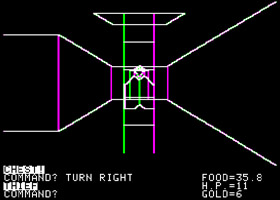
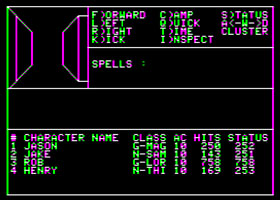
Myst in 1993
took the visuals to a whole new level using CD-ROM storage for
all of its (for the time) very realistic imagery, though you
could only move between a set of fixed locations and viewpoints
and use the mouse to click on objects to interact with them - https://www.youtube.com/watch_popup?v=4xEhJbeho7Q
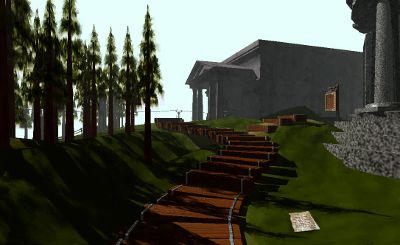
Moving on towards more modern computer games, they are immersive
and interactive. These also have the advantage of being real-time
running at 30+ frames per second, another key element.
Another key
element of VR is a viewer centered perspective
where you 'see' through your own eyes as you move through a
computer generated space. Akalabeth, Wizardry, and Myst were
first person view games, though you could only look where the
game allowed you to look. Modern first person shooters and other
games use this view as you move through a virtual world and
interact with objects there, and more often than not kill
everyone you meet. The way you see the environment is limited to
a screen with a narrow angle of view and you use a keyboard /
joystick / gamepad to change your view of that scene, and
interact.
One of the
most successful early ones was Wolfenstein 3D from 1992 - https://www.youtube.com/watch_popup?v=NdcnQISuF_Y
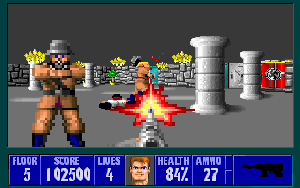
(image from Wikipedia)
Of course as time went on the visuals became better and some
would stick with a first person perspective and others using a
third person perspective to better show what was going on around
the player.
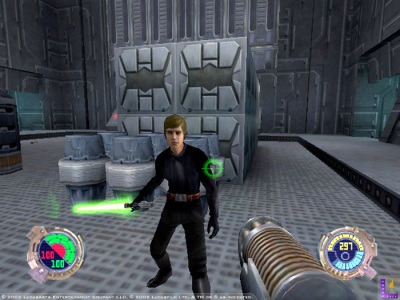
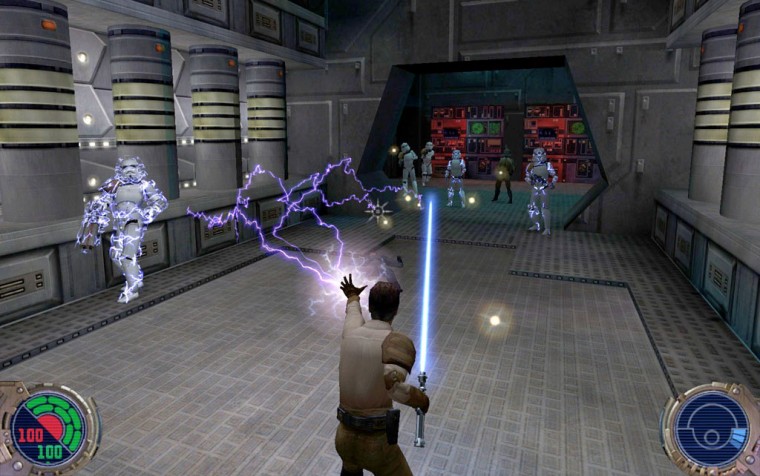
First person or viewer centered perspective on the left vs third
person perspective on the right from the Jedi Knight series from
the 1990s.
VR adds the concepts of head tracking, wide field of view and stereo vision
Head tracking allows the user to look around the computer generated world by naturally moving his/her head. A wide field of view allows the computer generated world to fill the user's vision. Stereo vision gives extra cues to depth when objects in the computer generated world are within a few feet.
As Dan
Sandin, original co-director of evl likes to say, VR gives us
the first re-definition of perspective since the Renaissance in
the 16th century. Instead of having a fixed point for the viewer
as denoted by the obelisk, the user is free to move around with
perspective changing as he/she does so.

Albrecht Dürer -
Draughsman Drawing a Recumbent Woman (1525) Woodcut illusion
from 'The Teaching of Measurements.'
Natural
interaction is also important in VR. If you
want to reach out and touch a virtual object then tracking the
users hands lets the user do that, rather than using a keyboard
or gamepad to 'tell' your virtual representation to interact.
One of the
best examples of this from the current crop of VR games is Job
Simulator, giving you a small environment to walk around in such
as a cubicle with a lot of different things to interact with
using both hands.
https://www.youtube.com/watch_popup?v=QRpL6gRbQO8
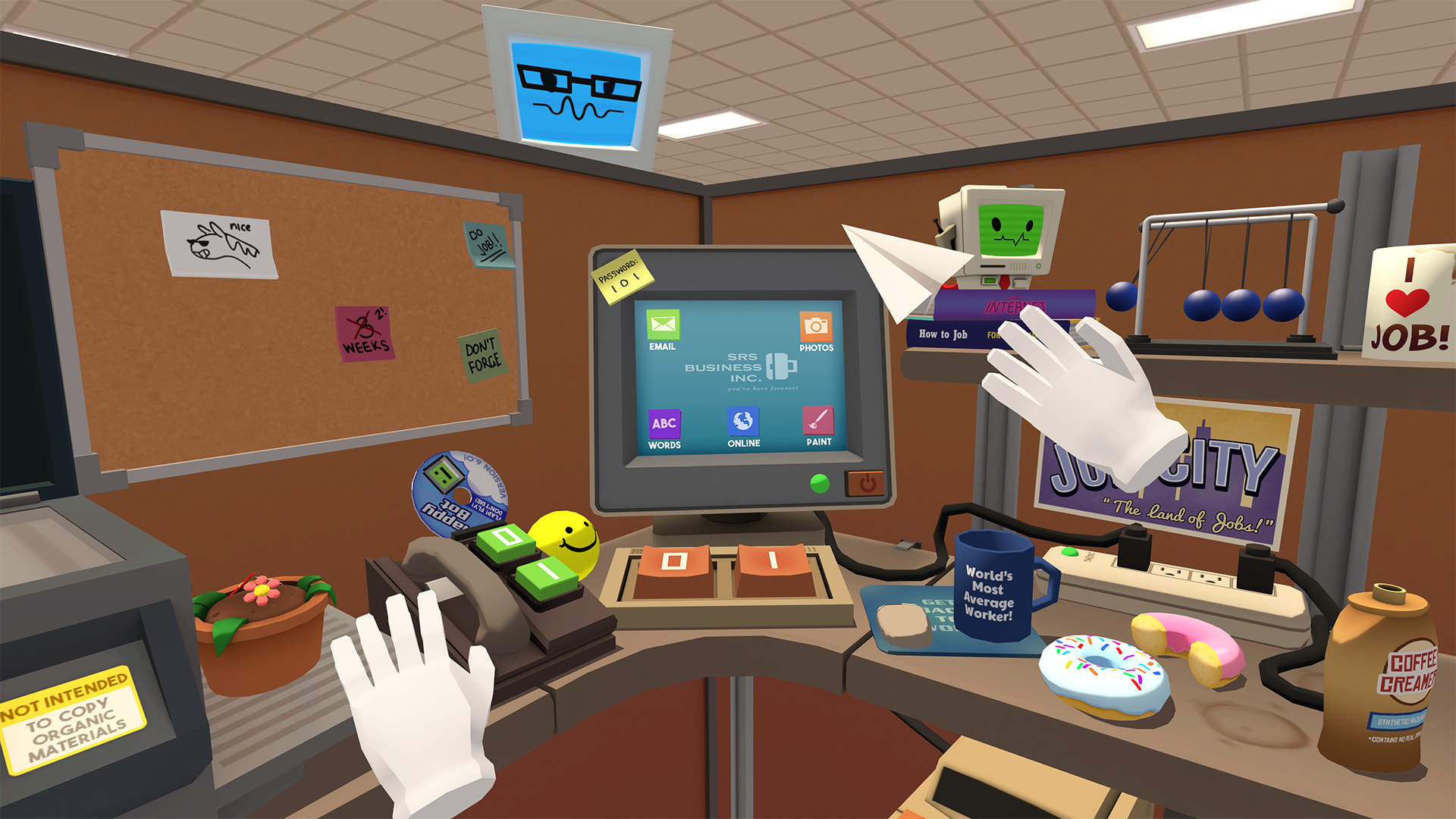
Audio
also plays a very important role in immersion (try listening to
a modern Hollywood film without its musical score) and haptic
(touch) feedback can provide important cues while in smaller
immersive spaces.
And there is some work in trying to deal with smell (the HITLab in the late 90s, and Yasuyuki Yanagi, Advanced Telecommunications Research Institute, Kyoto more recently) and taste (Hiroo Iwata, University of Tsukuba.)
So here is a
picture (from a video) that puts a lot of this together in a
more serious use of VR ... Randy Smith of General Motors in
their CAVE in the mid 1990s looking at different instrument
cluster layouts for cars GM is designing. Randy is real. The car
seat Randy is sitting in is real. The rest is computer
generated, including the remote passenger joining Randy from
another location. If you have been in an automobile, truck, or
airplane built since the mid 1990s, VR was used as part of its
design process.
In this case
the camera taking the photo is tracked so perspective is correct
for us, the viewer. Note that the crew of 'The Mandalorean'
would rediscover this technique 25 years later to integrate
actors into their virtual sets.
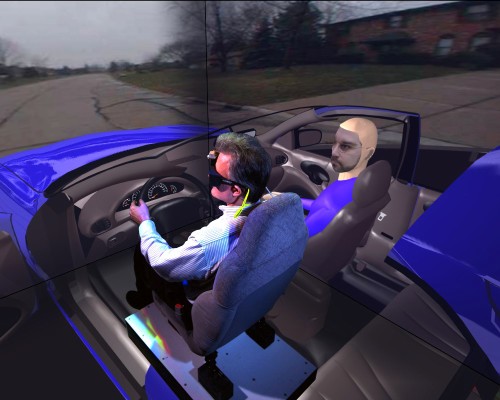
Augmented Reality has a very similar feature set but whereas Virtual Reality usually is set up in controlled settings - typically indoors within a fixed space where you can set up and calibrate tracking systems, and you have access to power for the computers to drive the graphics), augmented reality usually takes place out in the real world where tracking is less accurate, electrical power needs to be portable, and computational power needs to be portable.
Augmented reality has the
additional constraint that the synthetic world it is creating
must match up with the real world in real-time.
Better
batteries help with making power more available, and access to
local phones that have access to cloud computing resources can
help offload the weight and the computation, but accurate
tracking is still difficult. In some minimal levels of AR where
I want to know the weather, I probably only need accuracy down
to the city level, if I want to know where is the closest coffee
shop then I need accuracy down to the block level, if I want to
see what power lines are running under the street or the names
of the people who are walking past me then I need much more
accuracy and access to data at a much faster rate.
The
idea of creating virtual or augmented realities isn't new, and
the desire to experience these immersive worlds isn't new.
1580s - Giambattista della Porta develops the 'Pepper's Ghost' illusion - it is rediscovered in 1862 by Henry Dirks and John Pepper. It has recently been rediscovered yet again to produce 'holographic' concert performances link and a short video with some history and explanations here
1793 - Fixed 360 degree
Panoramas painted on the walls - Robert Barker in Leicester
Square, London - link

(Image from the British Library)
1840s - Moving Panoramas painted on large rolled cotton sheets -
John Banvard's Mississippi Panoramas - 3.6m (12 feet) high and
800m (2600 ft) long - link
A smaller one by John Egan
was 7.5' high and 348' long survives (think of a 185" diagonal
TV back in the 1840s)
with a video recreation at https://www.youtube.com/watch_popup?time_continue=25&v=uoqVfDEm5Rk

There was a 50 foot (15 m) tall and 400 foot (122 m) long
'cyclorama' of the 1871 Chicago fire installed downtown from
1892 to 1893.
https://chicagology.com/chicago-fire/fire031/
1800ds - Stereoscope - https://en.wikipedia.org/wiki/Stereoscope
The US Library of Congress
has a nice collection of stereographs including quite a number
of them taken in Chicago - https://www.loc.gov/photos/?fa=online-format:image%7Cpartof:stereograph+cards&q=stereograph
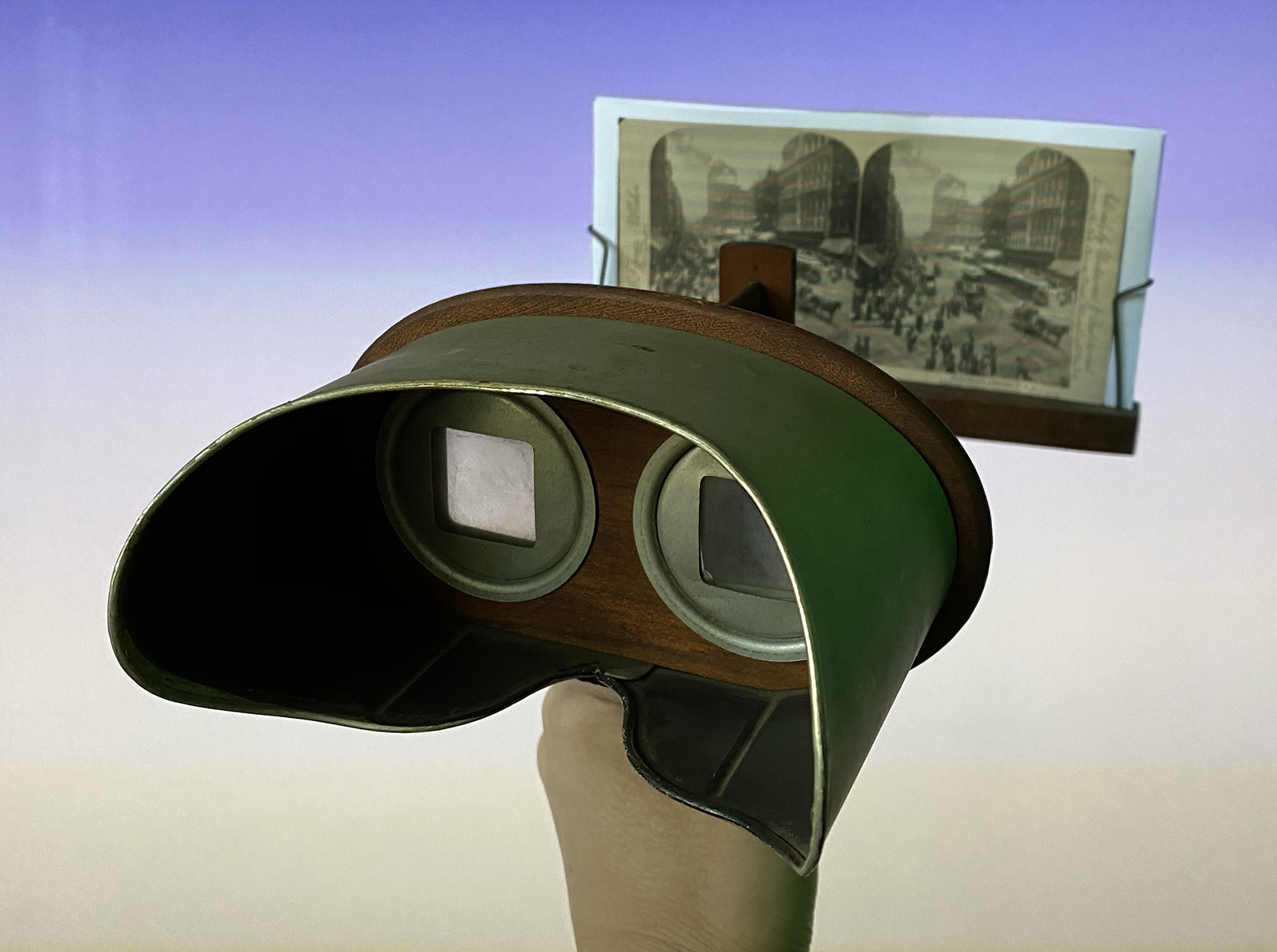
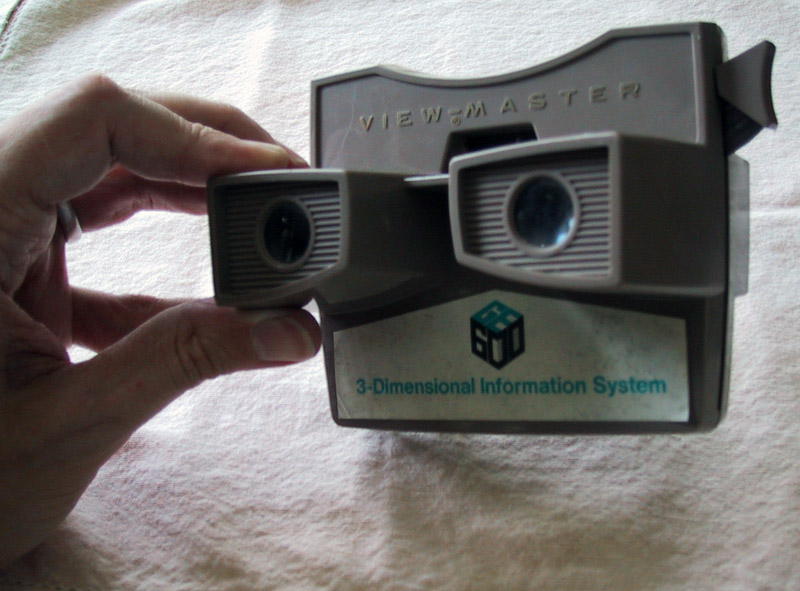
The stereoscope viewed single
pairs of images mounted on cards (sometimes glass) that could be
swapped in and out. The View-Master used discs containing 7 sets
of paired slid images where the viewer could use a lever on the
side to cycle between the images without needing to take their
eyes out of the viewer.
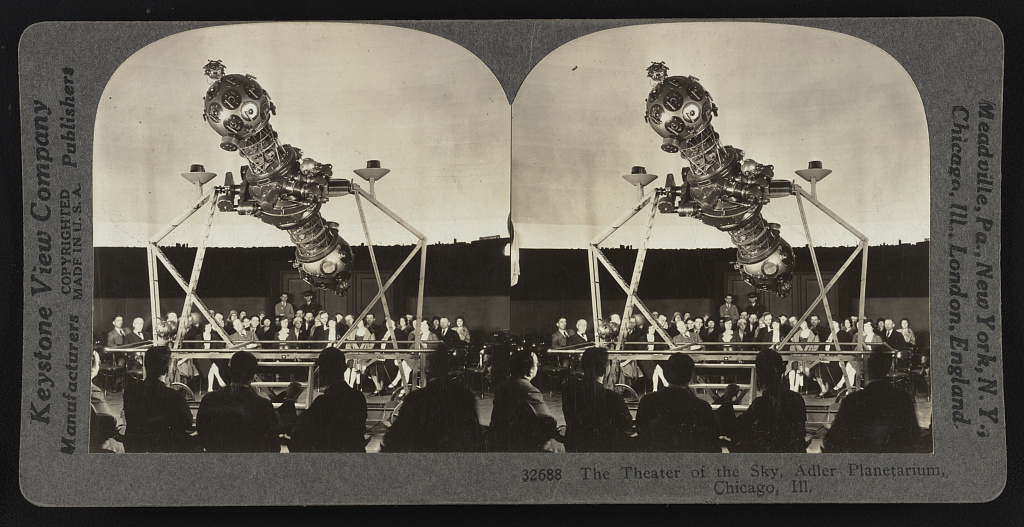
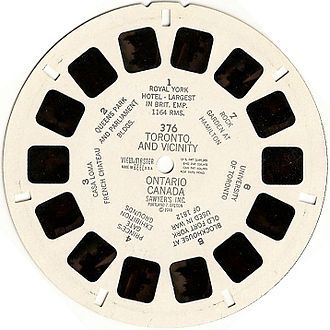
(Stereoscope image from the US library of Congress. View-Master
Reel from https://en.wikipedia.org/wiki/View-Master)
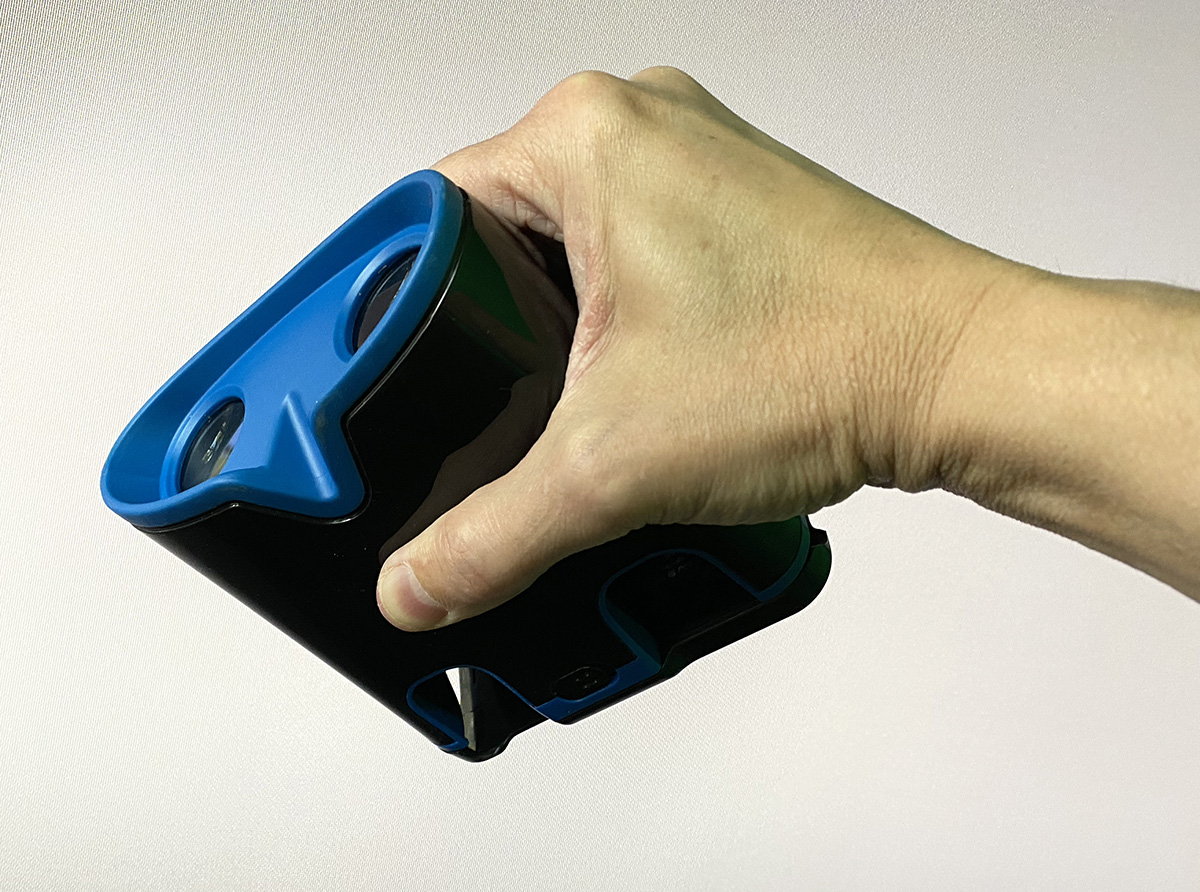
The
2010 version (my3D) that used an iPhone as the display device
allowing content to be delivered through an app from over the
web, including 3D video, and audio. The device included finger
holes to interact, and a hole for the iPhone's camera. Google
would use a similar idea in 2014 to make google Cardboard.
Literature
would quickly start to see the possibilities ...
1901 - The Master Key: An Electrical Fairy Tale, Founded Upon the Mysteries of Electricity and the Optimism of Its Devotees by L Frank Baum (who had published the Wonderful Wizard of Oz the year before) proposed a set of 'character marker' eyeglasses that, when you looked at a person, showed the character of that person overlaid on their forehead (G for good, K for kind, etc.)
http://www.gutenberg.org/files/436/436-h/436-h.htm
1935 - Pygmalion's Spectacles by Stanley Weinbaum describe a pair of spectacles which give a virtual reality experience: "But listen - a movie that gives one sight and sound. Suppose now I add taste, smell, even touch, if your interest is taken by the story. Suppose I make it so that you are in the story, you speak to the shadows, and the shadows reply, and instead of being on a screen, the story is all about you, and you are in it." and also VR's common critique ""Fools! I bring it here to sell to Westman, the camera people, and what do they say? 'It isn't clear. Only one person can use it at a time. It's too expensive.' Fools! Fools!"
http://www.gutenberg.org/files/22893/22893-h/22893-h.htm1950 - The Veldt short story by Ray Bradbury contains an educational nursery able to recreate any place
1955
- Circarama as part of Tommorowland at Disneyland with 11
projectors showing a 360 degree film captured from 11 cameras,
which were sometimes mounted on a car - basically what google
does for streetview today, but back in the 1950s with film
cameras.
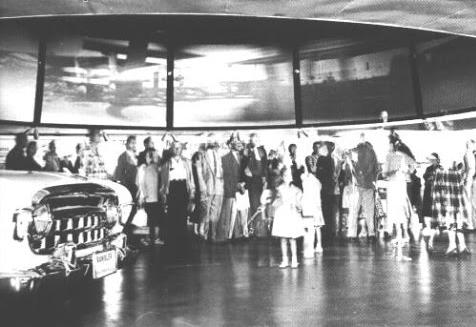
1960 - Morton Helig
Sensorama - https://www.youtube.com/watch_popup?v=vSINEBZNCks
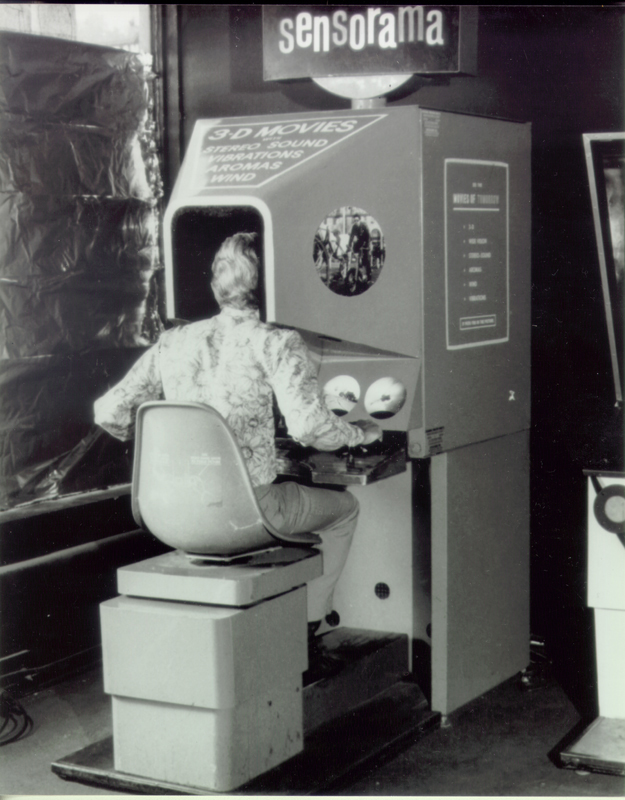
(image from http://www.mortonheilig.com/InventorVR.html)
patent for first HMD - the
Telesphere Mask - for 3D video
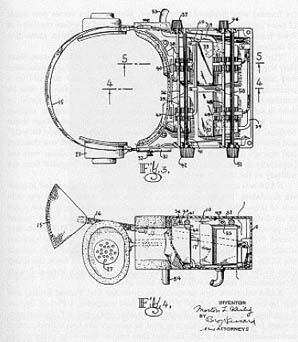
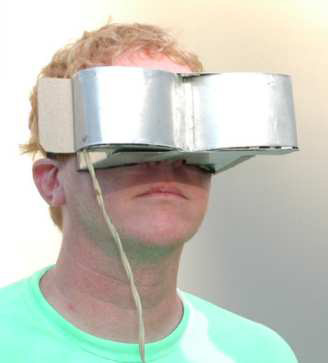
(image from http://accad.osu.edu/~waynec/history/lesson17.html)
1965 - Ivan Sutherland - University of Utah
1966 - Ivan Sutherland
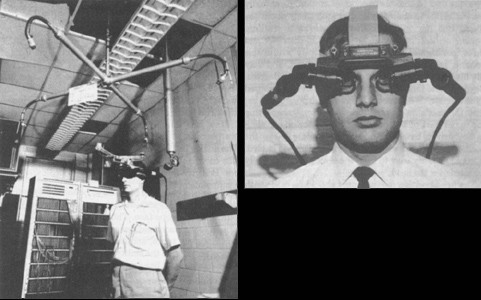
(image from
http://accad.osu.edu/~waynec/history/tree/images/hmd.JPG)
1967 - Fred Brooks - University of North Carolina
1973 - The Recreation Room
(later called the Holodeck) in Star Trek: the Animated Series
mid 70s - mid 80s Myron Krueger
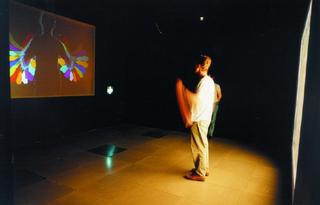
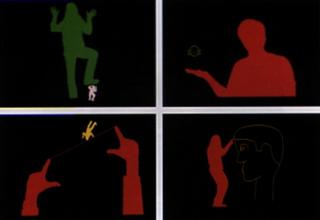
(image from http://resumbrae.com/ub/dms424/05/01.html)
1977 - Richard Sayre, Dan Sandin, Tom DeFanti - UIC
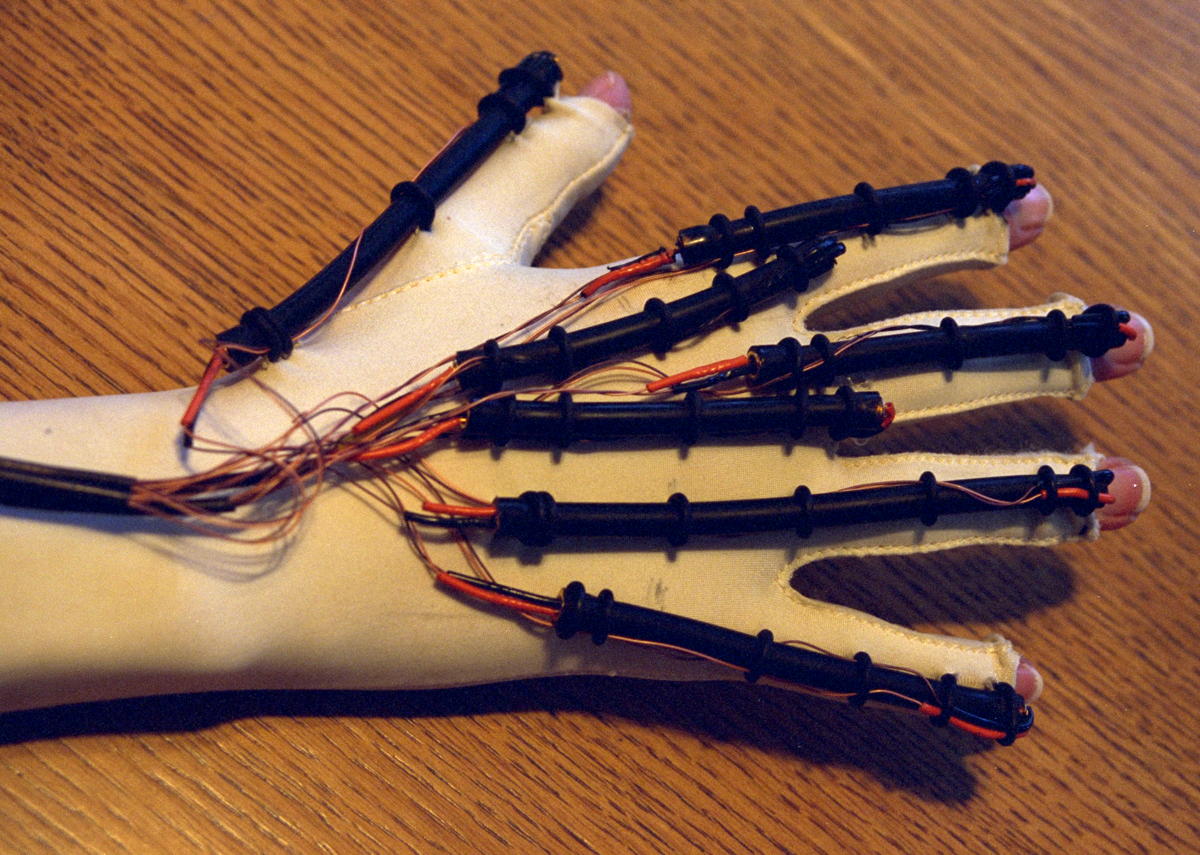
1979 - Eric Howlett
1982 - Thomas Furness III
1984 - Michael McGreevy and friends
1985 - Jaron Lanier - VPL research
1986 - Kazuo Yoshinaka - NEC
1989 - Autodesk
1989 - Fake Space Labs

(image from: http://www.fakespacelabs.com/tools.html)
1990 a nice short BBC segment from 1990 on the state of the art at the time - https://www.youtube.com/watch?v=T2CYLlSn1gA
1991 - Virtuality -
https://en.wikipedia.org/wiki/Virtuality_(gaming)
1992 - Carolina Cruz Niera, Dan Sandin, Tom DeFanti, et al -
Electronic Visualization Laboratory, UIC

1992 Tom Caudell - Boeing
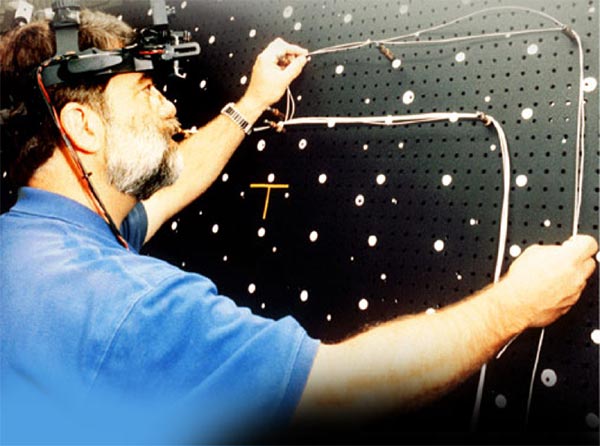
1992 Steve Feiner and
friends - Columbia University
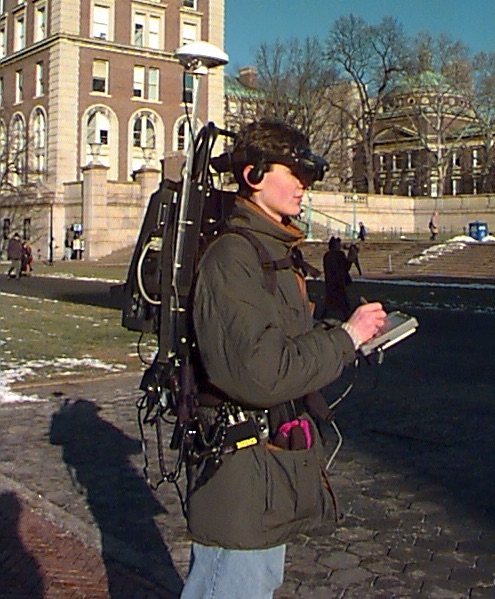
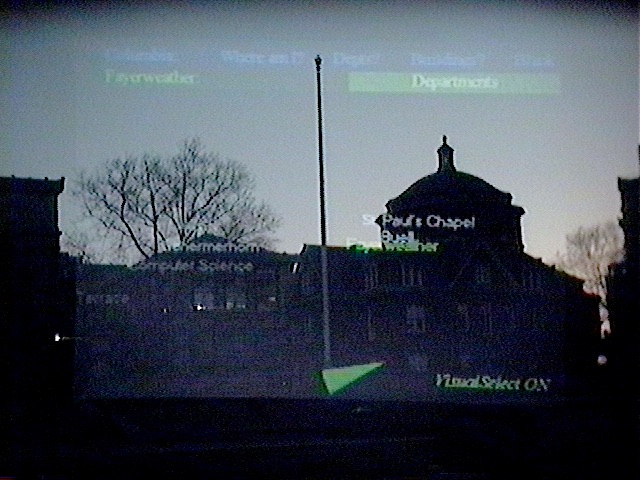
1993 - GMD - German National Research Center for
Information Technology
1993 - SensAble Technology
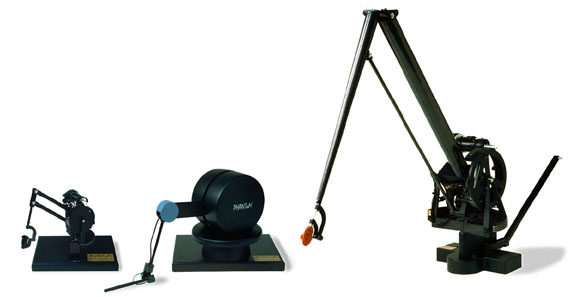
Mid 90s - Steve Mann - MIT
1996 - Maurice Benayoun - Ars Electronica
1998 - TAN / Royal Institute of Technology in Stockholm
1998 - Electronic
Visualization Laboratory, UIC

1999 - Mark Billinghurst - HITLab at University of Washington
2000 - Hong Hua - University of Arizona
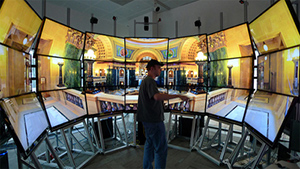
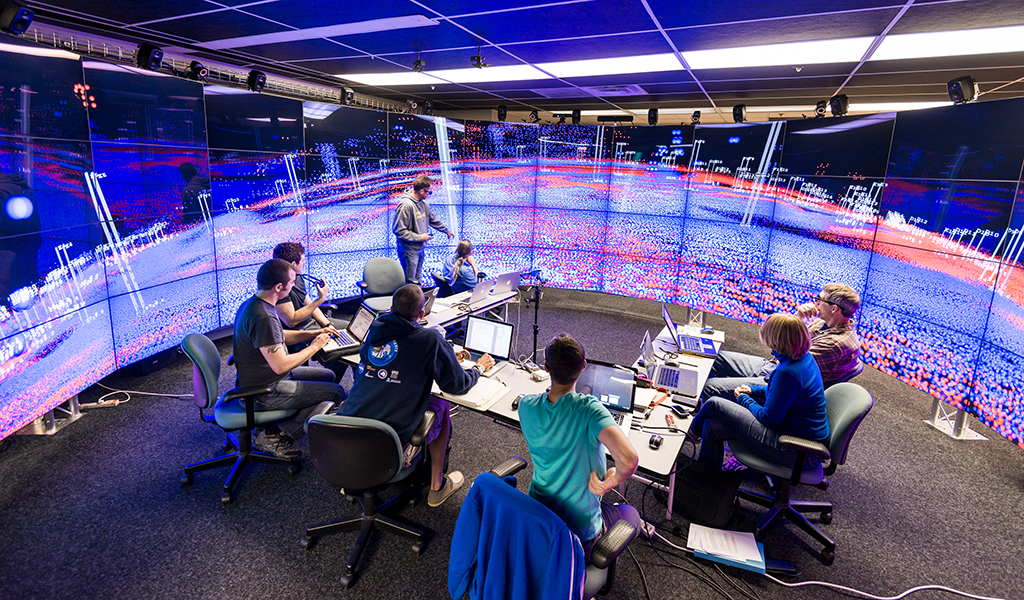
2013 - Google Glass
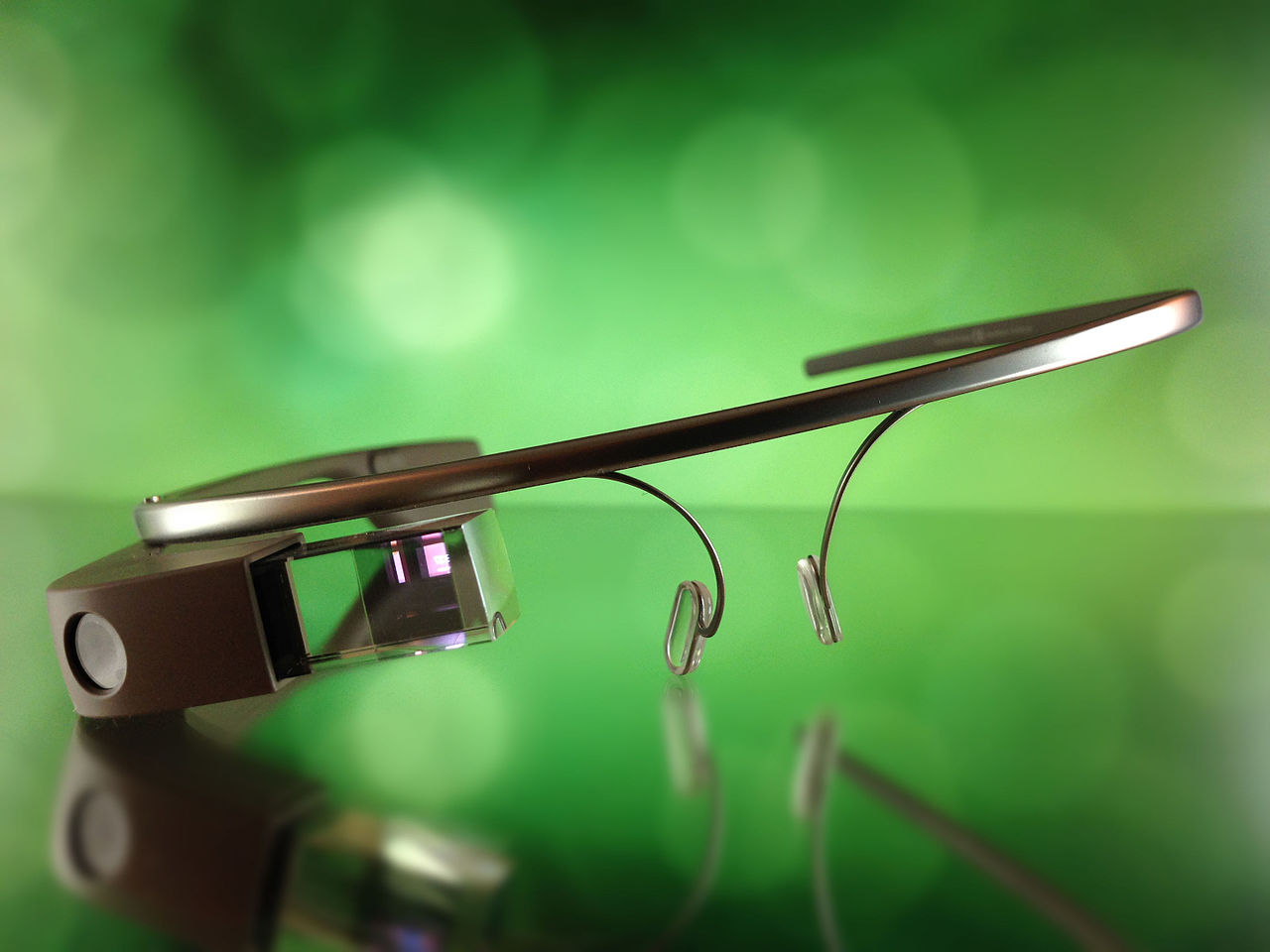
2014 - Oculus / Vive / Gear
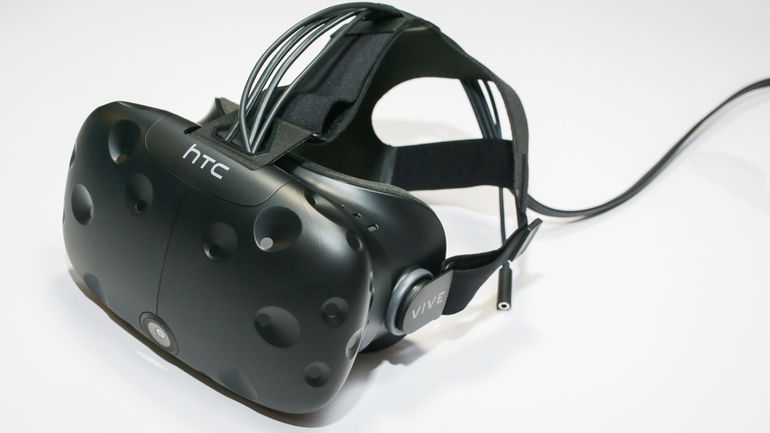
2014 - Google Cardboard
2016 - Microsoft
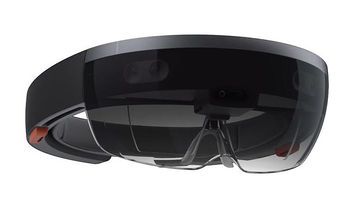
2017 - Dell, Asus and
others release their Microsoft mixed reality based headsets
($300) with 'inside out' tracking where the hand-held
controllers are tracked from the HMD with mixed success
https://www.theverge.com/2017/8/28/16202464/dell-visor-windows-mixed-reality-headset-pricing-release-announced
https://www.engadget.com/2017/09/03/asus-mixed-reality-headset-ifa-2017/
https://techcrunch.com/2017/08/28/microsofts-mixed-reality-headsets-are-a-bit-of-a-mixed-bag/
2018 - Magic Leap AR display
Dev Kits released ($2,300 with no PC or tether).
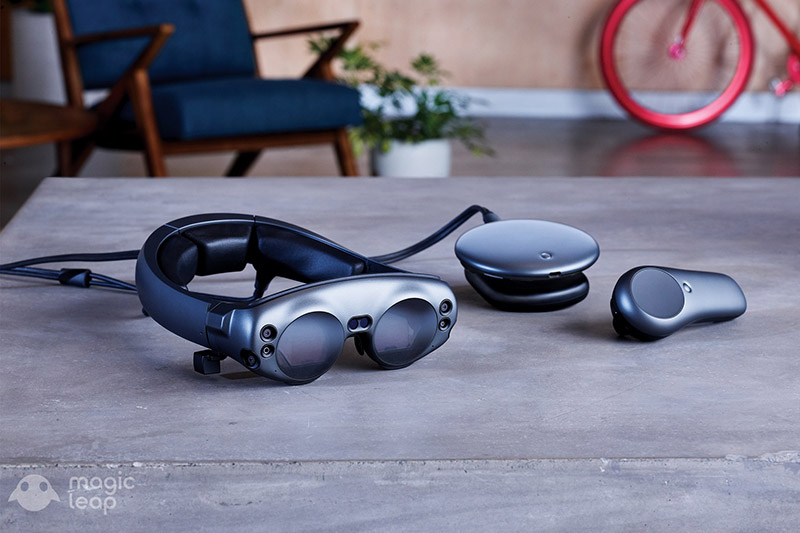
https://www.magicleap.com/
https://www.youtube.com/watch_popup?v=Vrq2akzdFq8
2019 - Oculus releases Oculus Quest as a $400 stand-alone device using smart phone level technology with 'inside out' tracking and two controllers, that is somewhat under-powered but works really well and is very easy to set up. In 2020 Oculus Quest 2 (now Meta Quest 2) was released as a more powerful version of the Quest with improved graphics and hand tracking, which would again be updated in 2023 as the Meta Quest 3.
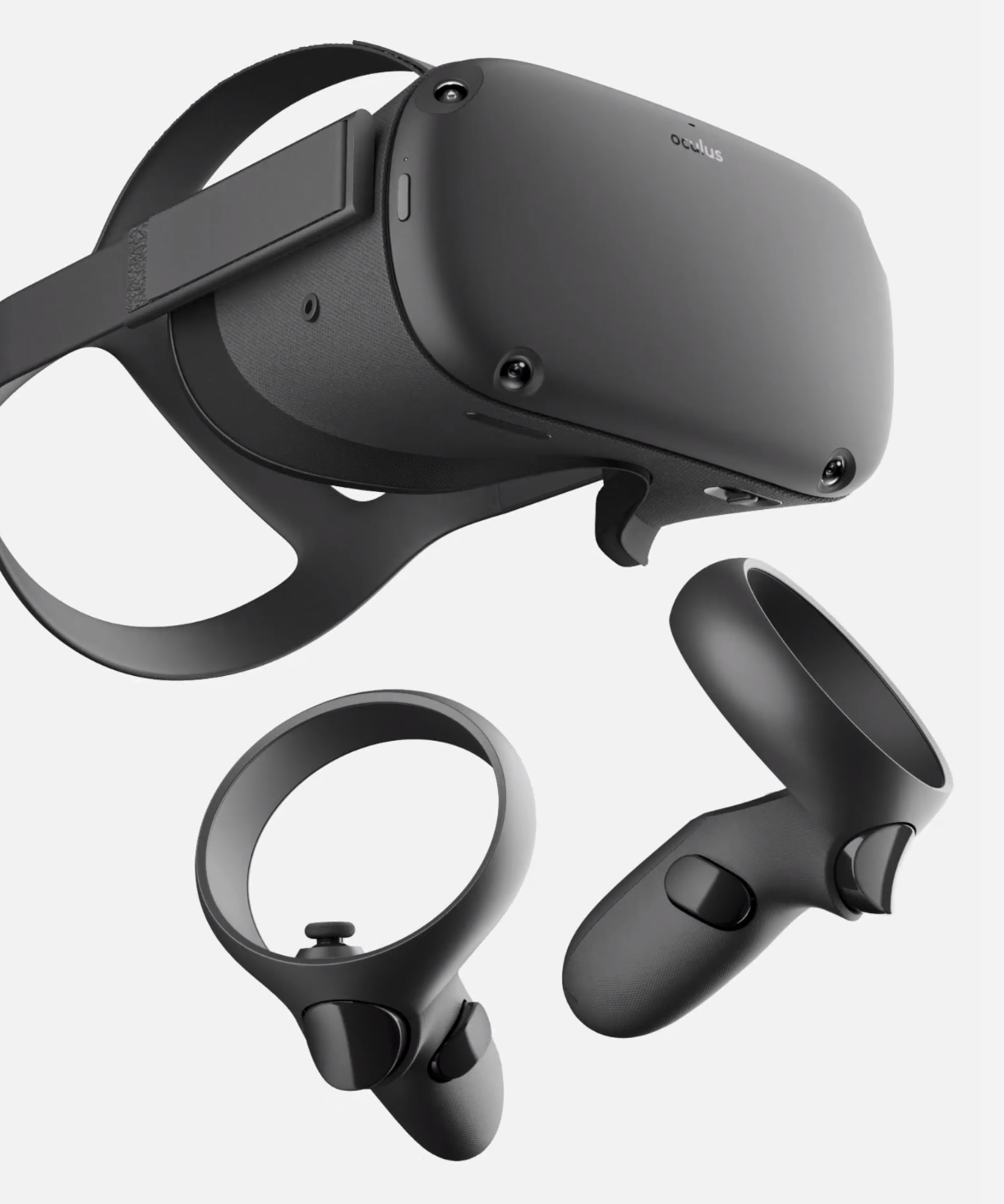
2024? Apple is expected to
release their Apple Vision Pro AR headset.
VR has gone through several hype phases with the biggest being in the mid 80s and mid 90s. With the release of low cost headsets we are in the midst of another VR hype phase, now termed 'the Metaverse', while AR is in its first hype phase.
As of 2019
both VR and AR have made it past the Trough of Disillusionment
and can be considered 'mature' technologies.
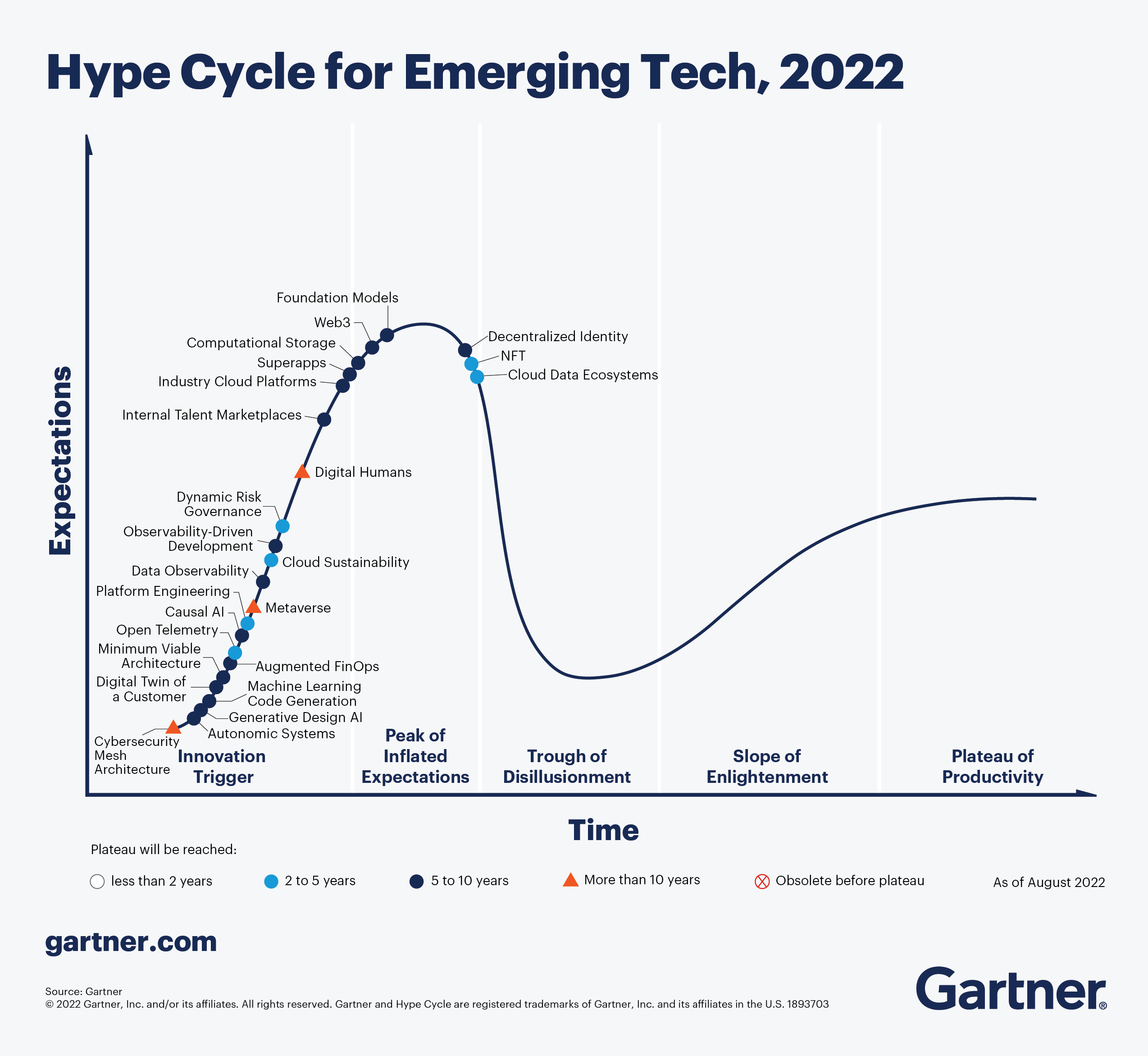
As of 2018
Virtual Reality made it onto the plateau of productivity, but AR
was still deep in the trough.
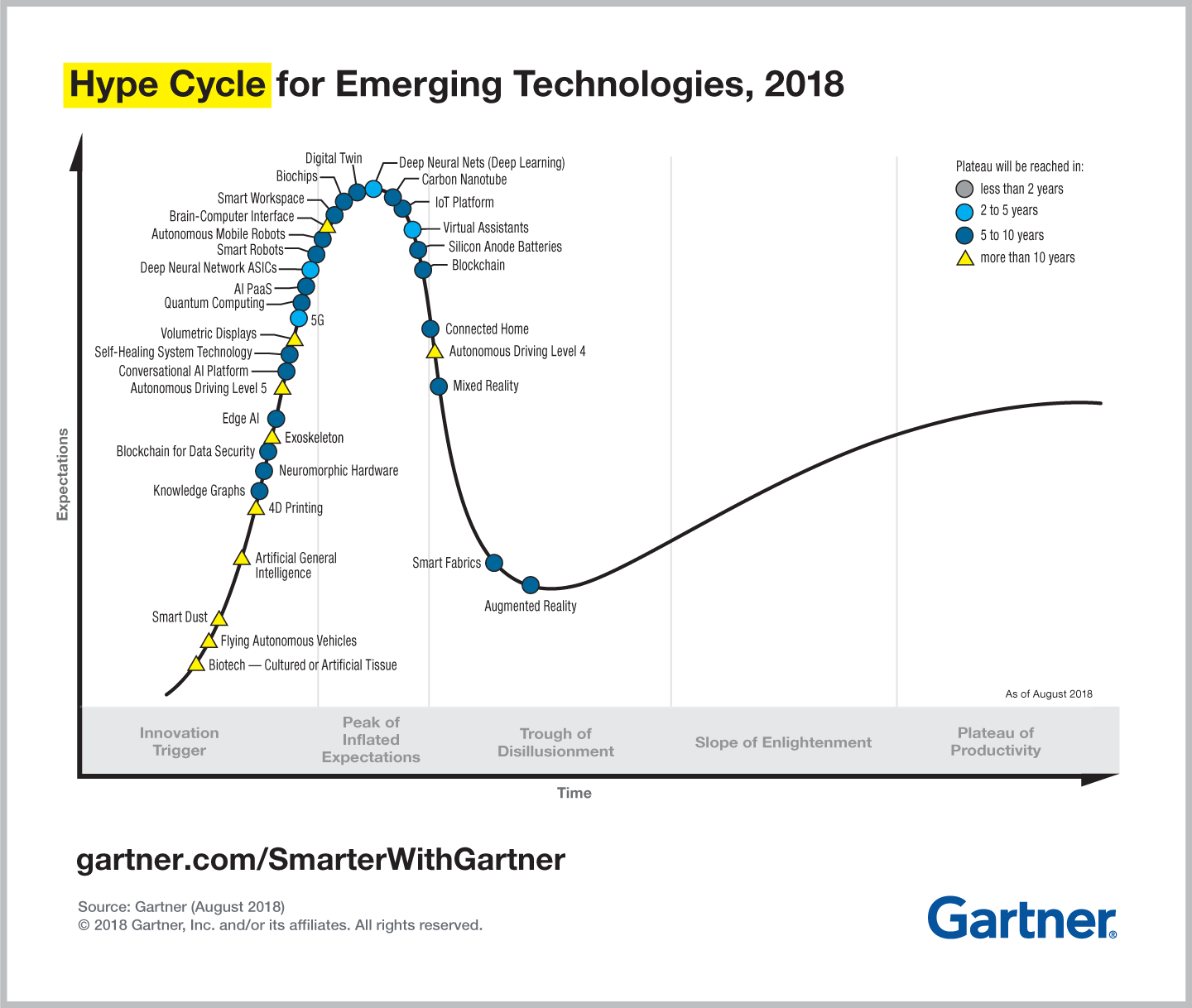
while in 2017 VR was still on
the slope of enlightenment and AR was headed into the depths of
the trough.
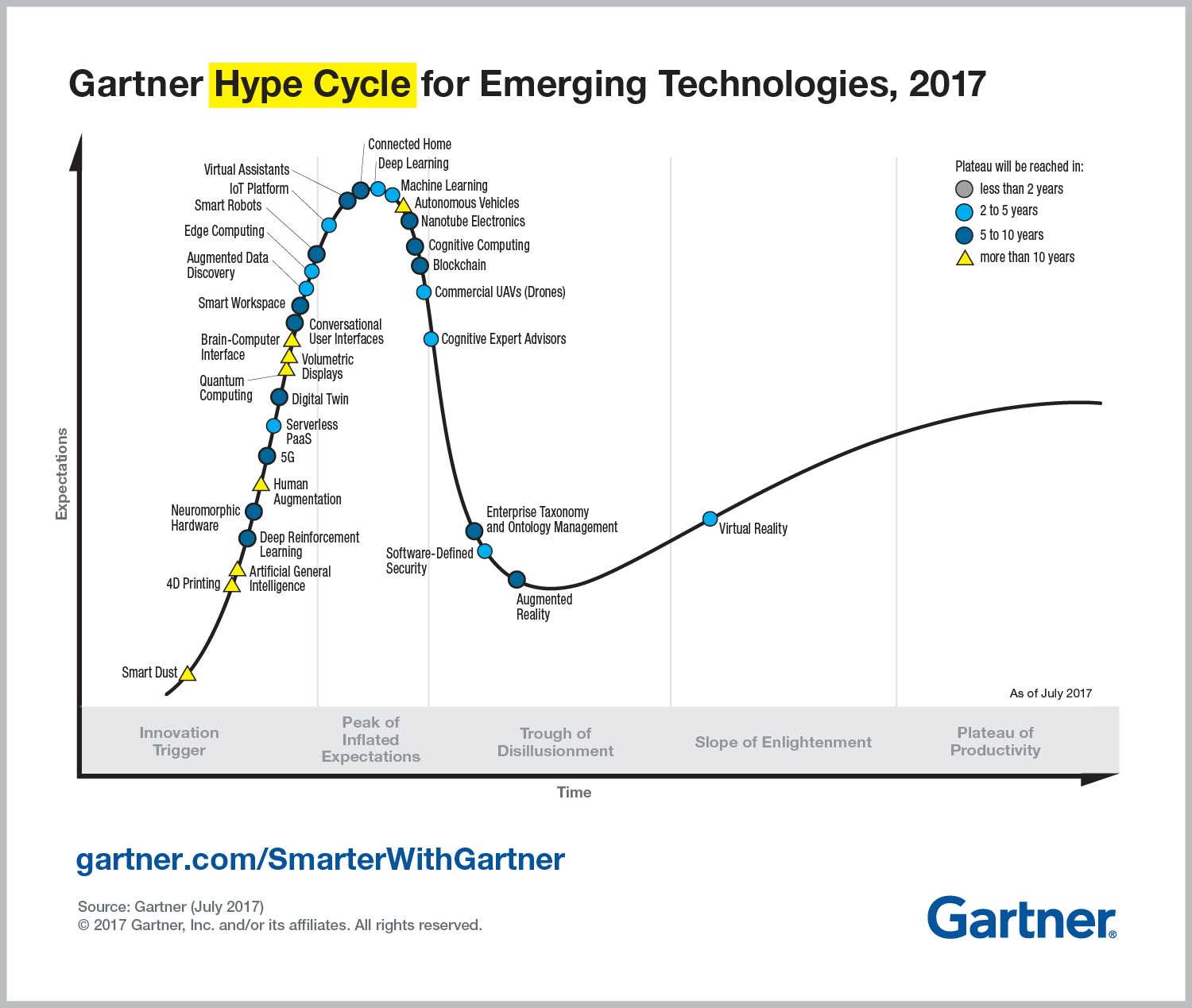
(image from
https://www.gartner.com/smarterwithgartner/5-trends-emerge-in-gartner-hype-cycle-for-emerging-technologies-2018/)
back in 1995, when the first
of these charts came out, VR was just sliding down into the
trough of Disillusionment
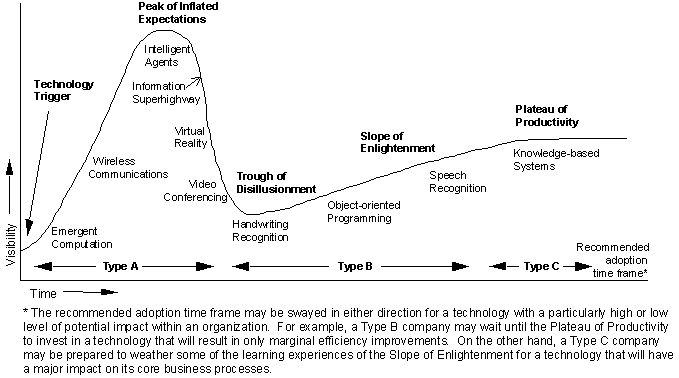
(image from
https://www.gartner.com/doc/484424/gartners-hype-cycle-special-report#1169528434)


For large format based systems, some companies that sell these things are:
For Head Mounted Displays, the previous generation of $10,000 - $20,000 displays by companies like NVIS have mostly been supplanted by a new generation of low cost sub $1000 gaming-related displays:
Instead of totally isolating
the user from the real world, Augmented Reality displays overlay
computer graphics onto the real world with devices like Google Glass and the Microsoft HoloLens and the Magic Leap
and there are other
interesting solutions that have been in development for a couple
decades such as the Virtual Retinal Display
and to some extent your
smartphone or tablet with GPS, camera, and a Gyroscope already
acts as an AR display.
There
is quite a bit of work going on in various research labs in
VR. New devices are being created, new application areas being
worked on, new interaction techniques being explored, and user
studies being performed to see if any of these are valuable.
What is much harder is getting the technology and the
applications out of the research lab and into real use at other
sites - getting beyond the 'demo' stage to the 'practical use'
stage is still very difficult.
I'm going to give a brief overview here and then we will go into
each of these areas in more detail in the coming weeks
For virtual reality it is important to note that the goal is not always to recreate reality.

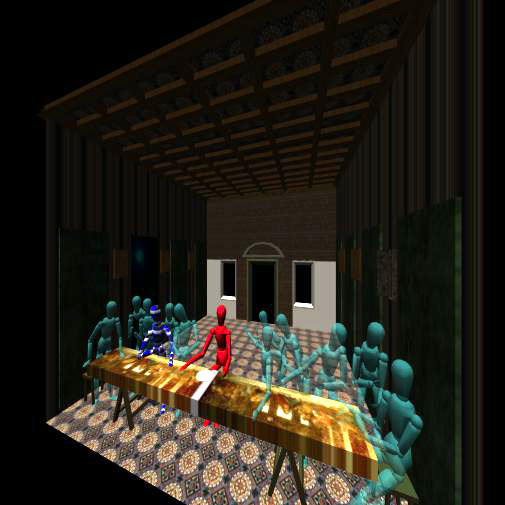
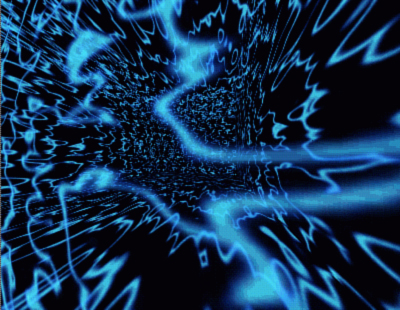
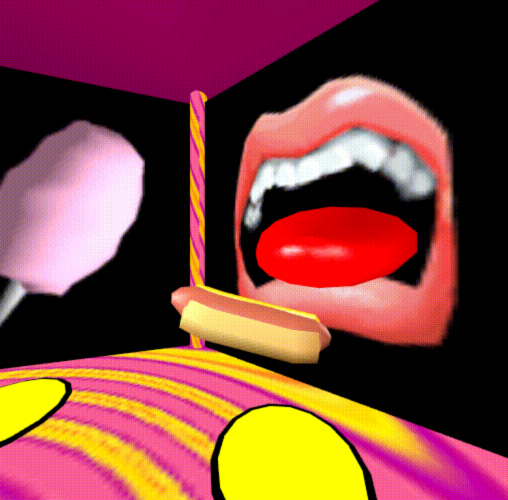
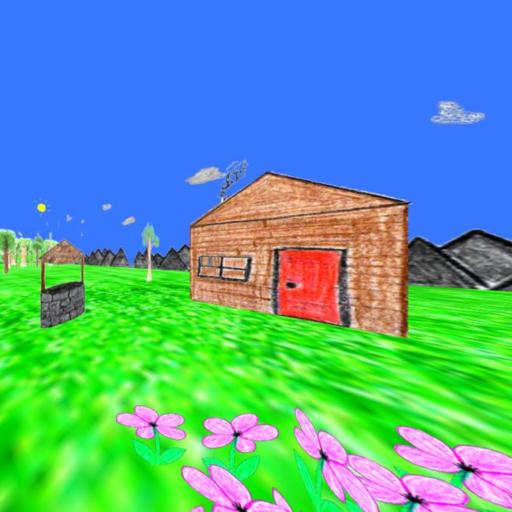
Computers are capable of creating very realistic images, but it can take a lot of time to do that. In VR we want at bare minimum 20 frames per second and preferably 60+ in stereo.
For comparison:
The trade off
is image quality (especially in the areas of smoothness of
polygons, anti-aliasing, lighting effects, transparency) vs
speed of rendering. In some cases, like General Motors, they
sacrifice frame rate (frames per second) for better visual
quality.
Gamers tend
to want much higher frame rates than people watching TV / Movies
/ YouTube videos.
In AR we are
typically not covering the entire field of view of the user so
the rendering requirements are lower, but there is a greater
need to do a better compositing between the real and the
synthetic (i.e. based on lighting conditions) and faster
graphics updating.
If we want stereo visuals then we need a way to show a slightly different image to each eye simultaneously. The person's brain then fuses these two images into a stereo image.
One way is to
isolate the users eyes (as in a HMD or BOOM) and feed a separate
signal to each eye using 2 display devices where each eye
watches its own independent display (as in older HMDs), or take
a single wide display and render the left and right eye views
onto the same screen and then make sure each eye can only see
its appropriate half of the display (as in current less
expensive HMDs).
Another way is to show the imagery on a larger surface and then filter which part of the image the user sees. There are several different ways to do this.
We can use
polarization (linear or circular) - polarization was used in 3D
theatrical films in the 1950s and 1980s and the current
generation. One projector is polarized in one direction to show
images for the left eye, and the other projector is polarized in
the other direction to show images for the right eye. Both
images are shown on the same screen and the user wears
lightweight glasses to disambiguate them.
This same
technology can be used on televisions by adding a polarized film
in front of the display where even lines are polarized in one
direction and odd lines are polarized in the other direction.
The user only sees half of the resolution of the display with
each eye. This is the technology we use in CAVE2.

We can use
colour - this has been done for cheaper presentation of 3D
theatrical films since the 50s with red and blue (cyan) glasses
as you only need a single projector, or a standard TV. It
doesn't work well with colour and is somewhat headache inducing
after an hour.

We can use time - this was common in VR in the 90s and the 00s as in the original CAVE. Here we show the left eye image for a given frame then the right eye image for the same frame, then move on to the next frame. The user wears LCD shutter glasses which ensure that only the correct eye sees the correct image by going opaque on the eye that should be seeing nothing. These glasses used to cost over $1000 each in the early 90s. They were the basis for the early 3D televisions and cost around $100 per pair. Now they are down to $30 per pair.

In all these cases both of the eyes are focusing at a specific distance - wherever the screen is located. There is no way for the user to change focus and bring parts of the scene into focus and let others go out of focus as in the real world .
"people hate helmets, but people like sunglasses"
ergonomics and health issues of various displays
Typically
museums and other places with many visitors it is necessary to
either give the glasses away to the user (with the paper ones)
or wash them (with the polarizing ones) to keep things sanitary.
This is more difficult with HMDs and AR headware where people
have tried using alcohol wipes.
People
typically don't spend all day in VR but people may spend all day
in AR. VR also tend to be done in private where AR is more done
outside. AR headware has to be light and unobtrusive, but still
be able to operate. The entire computation system may be in the
headgear as well, or some may be offloaded to a smart phone or
to the cloud. Google Glass was one light solution. Headware for
bikers like the Solos http://www.solos-wearables.com/ are
another, as is the Microsoft HoloLens.

![]()
![]()
![]()
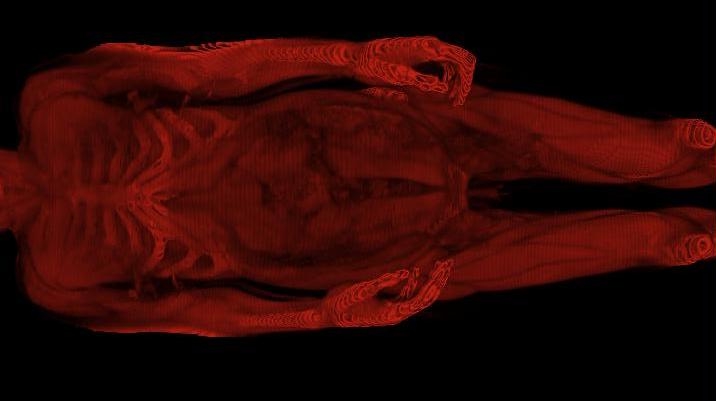
Need a computer capable of driving the display device at a fast enough rate to maintain the illusion.
In the past
(i.e. the 90s) that usually means either simple scenes, very
specialized graphics hardware, or a lot of work in optimizing
the software. But this is less true today where scenes are
getting more complex, the hardware more commonplace, and the
software more capable, mostly thanks to the video-game industry.
Benchmarks on CPUs and graphics cards aren't really very meaningful. They can give ballpark figures but there are a lot of factors that combine to give the overall speed/quality of the virtual environment.
Multiple processors are usually required, since there tend to be multiple simultaneous jobs to be performed - i.e. generating the graphics, handling the audio, synchronizing with network events.
Multiple graphics engines are pretty much required if you have multiple display surfaces
Ability to
'pipeline' the graphics is pretty much required
With a very
fast network it is possible to render the graphics remotely on a
more powerful computer and just use the local display as a
receiver.
At minimum you want to track the position (x, y, z) and orientation (roll, pitch, yaw) of the user's head - 6 degrees of freedom.
You often
want to track more than that - 1 or 2 hands, legs?, full body?
How accurate
is the tracking?
How far the user can move - what size area must the tracker track?
Can line of
sight be guaranteed between the tracker and the sensors, which
is necessary in many tracking systems?
What kinds of latencies are acceptable?
Input devices are perhaps the most interesting area in VR research. While the user can move their head 'naturally' to look around, how does the user navigate through the environment or interact with the things found there?
Ambient sounds are useful to increase the believably of a space
Sounds are useful as a feedback mechanism
Important in collaborative applications to relay voice between the various participants
Spatialized 3D sound can be very useful
Often useful to network a VR world to other computers.
We need high bandwidth networking for moving large amounts of data around, but even more important that that we need Quality of Service guarantees, especially in regards to latency and even more especially related to jitter.


Photo of the classic
evl CAVE from the early 90s with 4 1-megapixel screens with
active (shutter glasses) stereo giving typically 2 megapixels to
each eye depending where you stand) , a 10' by 10' area to move,
magnetic tracking for the head and one controller. Total cost
was around $1,000,000 in 1991 dollars (about $2,000,000 in 2020
dollars) with about $500,000 of that 1991 price for the
refrigerator sized computers to drive it.
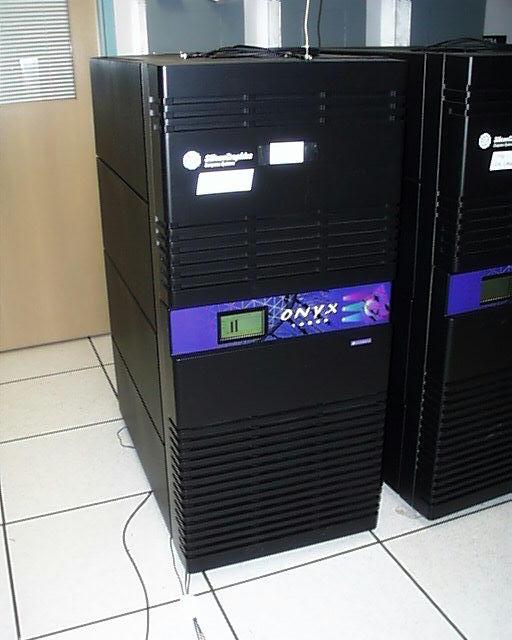
to put this hardware into
context, in 1991 we had
In 2017 the VIVE could send
roughly 1-megapixel to each eye, gives the user a similar space
to walk around in, IR camera tracking for the head and two
controllers for about $2,500 including the computer.
If you don't mind lower
quality visuals in 2019 the Oculus Quest gives the user a
similar experience for $500 with no additional hardware needed.
Vision / Visuals and Audio